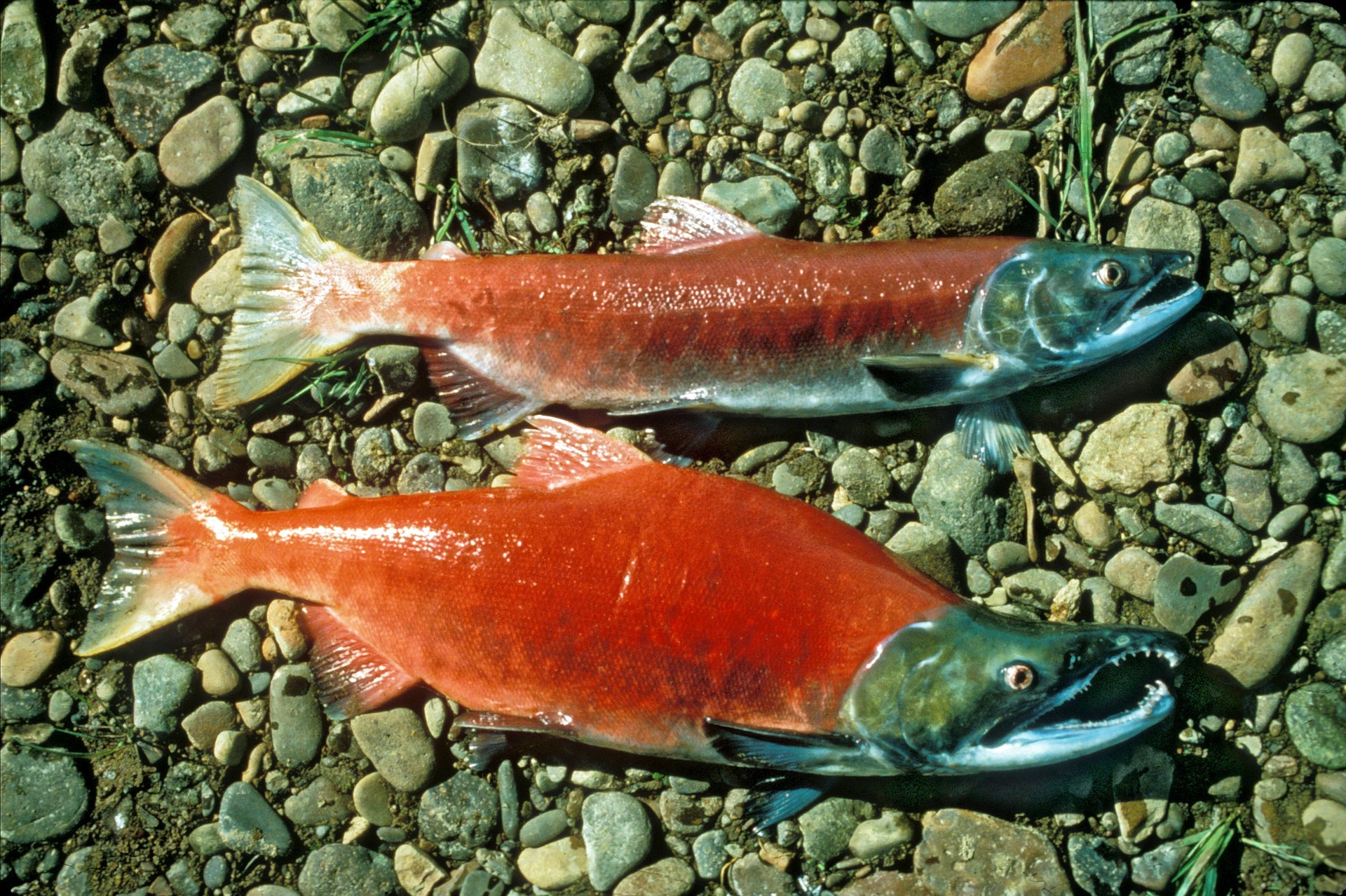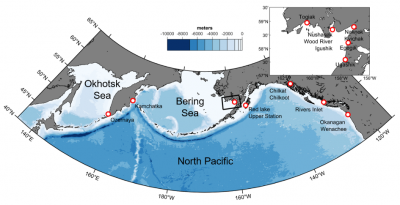
Image by Kevin Phillips from Pixabay
by Riley Tjosvold
Fisheries researchers have long grappled with the question of where specific salmon stocks go when they leave rivers and streams and migrate into the ocean. The problem: studies in which researchers sample fish at sea, or track fish using tags, can be labour-intensive and costly. However, a cheaper, faster – and hotter—method of investigating where salmon stocks spend their time shows promise, and it uses a material that some fisheries management groups have been collecting for over a century: salmon scales.
In a study, published in late 2020 in Ecology and Evolution, Institute for the Oceans and Fisheries (IOF) researchers used the stable isotopes preserved in salmon scales to locate the regions where a number of different North Pacific sockeye salmon stocks forage for food.
The process is complex and fascinating: certain carbon isotopes are absorbed by phytoplankton during photosynthesis and then travel through the food web into salmon. The ratio of the isotopes stays consistent from one food source to the next, but different regions of the ocean have unique carbon isotope “signatures.” This is because water temperature affects the amount of carbon dioxide (the chemical compound from which the isotope originates) that gets dissolved in the ocean and ultimately how much carbon dioxide is available to phytoplankton. The isotope signature is preserved in salmon scales and can be measured by an isotope ratio mass spectrometer, a machine that burns the scales at high temperatures.
The researchers collected hundreds of scale samples – some dating as far back as the 1960s — from archives across the North Pacific.

Map of the study area with locations of the sockeye salmon stocks investigated.
After analyzing the isotopes, they checked their measurements against the isotope signatures of different regions of the North Pacific.
“What surprised us is that we were able to trace the different stocks, especially where they forage,” said Evgeny Pakhomov, professor and director of the IOF and one of the study’s co-investigators. “We know that fish are going into the open ocean, and our perception and vision into this is that when salmon go into the open ocean they mix together. What this paper is telling us is that it looks like different stocks of salmon are feeding in different places.”
Knowing where different salmon stocks travel to forage will be essential for identifying the unique environmental threats they will face as oceans become more inhospitable due to climate change and other cumulative impacts to ocean habitats.
“What’s cool about this is it enables us to start partitioning out the distribution of these stocks,” Hunt said. “We can start looking at variability in environments experienced by different stocks, and that can take us one step further to knowing the effects of the open-ocean part of their life history on their survival and growth… This is a great first step in thinking about regional effects on fish.”